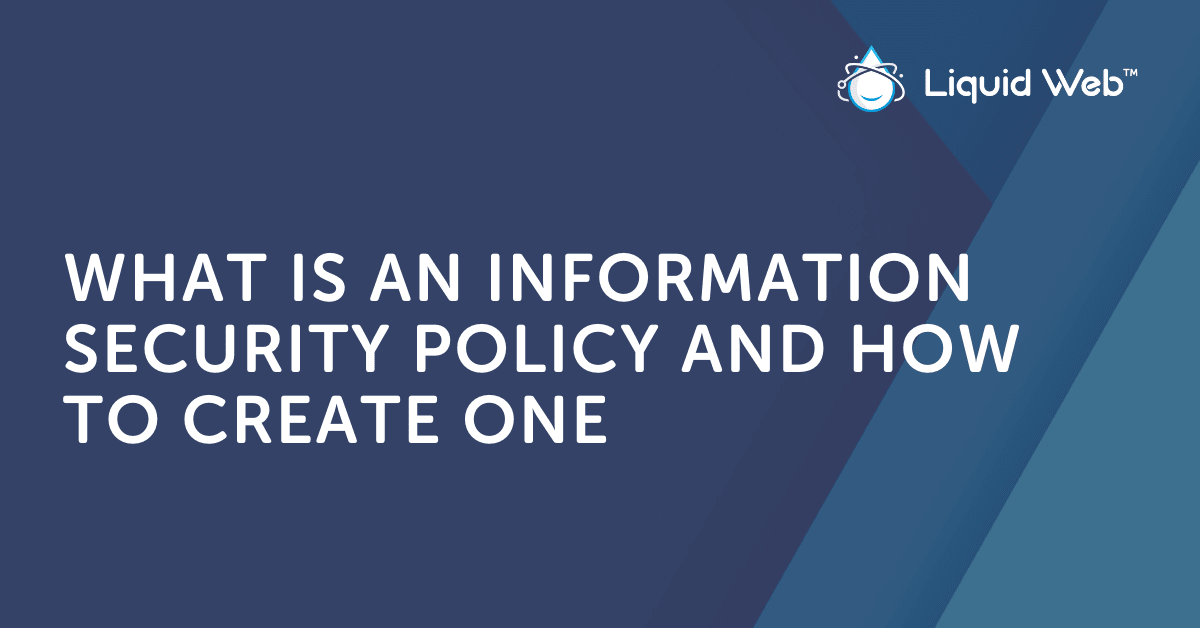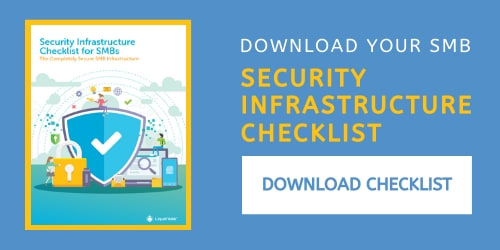
Wondering whether you need an information security policy for your business?
One side effect of the enhanced role that Information Technology (IT) plays in our lives is that our information is more valuable than ever. Regardless of whether it’s IT service providers, advertising companies, or even hackers, accessing and processing data for insights into people’s behavior is what drives a lot of their actions.
Businesses generate a lot of sensitive information from their interactions with customers, vendors, and stakeholders. Keeping this information accessible only to authorized entities and away from those who want to profit from this confidential information is why any intelligent organization should have an information security policy.
What is an Information Security Policy (ISP)?
An information security policy (ISP) is a documented set of rules, guidelines, and procedures designed to ensure a minimum standard of data security within an organization. The information security policy governs the use of an organization’s IT resources by staff, clients, and other stakeholders to enforce strict compliance with the recommendations of the policy when it comes to digital information.

Why Does a Company Need an Information Security Policy?
Information security policies are a vital part of the line of defense that secures an organization against cybersecurity threats that have become increasingly common with the widespread use of information technology for business solutions. Just like your disaster recovery plan or your business continuity plan, an up-to-date ISP will reduce your exposure to attacks from hackers and other malicious actors.
Many businesses possess sensitive data, ranging from personal data for clients and staff to financial information and intellectual property. For companies like this, whose bottom line is dependent on their ability to store data securely and maintain customer’s trust, an information security policy is essential.
When these policies are not adhered to, it can lead to a data breach.
An example of this is the case of CD Projekt Red, where hackers gained access to their internal networks and downloaded accounting and administrative documents, as well as the intellectual property for three of their games. The breach severely impacted the company’s software development processes and delayed product releases to their customers while also eroding customer trust.
A good information security policy can secure against problems within your organization, such as corporate espionage and sabotage by disgruntled staff. In countries with legal requirements for companies to safeguard customer data, your policy will ensure compliance and protect you against legal attacks.
Eight Elements of an Information Security Policy
Here are the eight elements every information security policy needs to have:
1. Scope
The scope of the ISP defines all the information technology systems, data, users, and other IT infrastructure in an organization that will be affected by the policy.
2. Objectives
The information security objectives determine the strategies and security requirements that the policy will enforce. An organization’s management team is responsible for defining these objectives with the support of an Information Security professional.
While the information security objectives may differ between organizations, they should focus on maintaining the confidentiality, integrity, and availability of the organization’s data and information assets.
3. Data Classification
Your ISP should classify the data your organization is responsible for according to its importance. This way, the policy can specify the levels of security that apply to each data class. For instance, the security protections the policy recommends for intellectual property data will differ from those that apply to data about staff roles and responsibilities.
4. Data Operations
This section of the policy covers the procedures for interacting with data. It includes how data is generated, stored, encryption methods for backups, and industry standards you apply to the data. This section also relies on the data classifications mentioned earlier. Ensure that this section covers all business data challenges your team can surmise.
5. Authorizations and Access Control
A standard ISP will use a hierarchical pattern to determine who can authorize and access specific data classes. The hierarchy will also apply to access controls for IT infrastructure to ensure that sensitive data doesn’t fall into the wrong hands.
The access controls section of the policy usually aligns with the organizational structure, with higher-level individuals having more access to information than junior staff.
6. Responsibilities
Your information security policy will need people who will take charge of its implementation, education, and enforcement. This section of the policy will specify the roles for those who will handle these responsibilities and other vital roles necessary for the policy to be effective. These include change management, physical security, business continuity, risk assessment, and disaster recovery, to name a few.
7. Awareness
An information security policy that no one within the organization knows about or understands is useless. That’s why all staff need to be informed about the policy and its purpose. They should also undergo security awareness training on the security measures that the policy puts in place to protect data. Bringing the rest of the team up to speed will make them less vulnerable to social engineering attacks and improve their awareness of physical security measures.
8. Legal References
There is also industry-specific legislation, such as the Health Insurance Portability and Accountability Act (HIPAA), which you should also consider if your business is a part of that sector.

Five Information Security Policy Best Practices
For your organization’s information security policy to be consistent with industry best practices, its guidelines should have references to the following:
- Identity Access and Management (IAM): Covers how IT administrators assign and secure access to systems and applications based on staff roles. Securing access to these systems requires that you also have strong password guidelines as part of the IAM policy.
- Business Continuity Plan (BCP): The business continuity plan outlines the steps an organization carries out in advance to ensure that it can operate its critical business functions during a crisis.
- Acceptable Use Policy (AUP): These are the requirements that staff must meet to use the company networks and infrastructure. The AUP prevents the misuse of company resources.
- IT Operations and Administration Policy: Outlines how the organization’s IT team will work together and coordinate with the other departments to comply with security and regulatory requirements. The level of cooperation between your IT department and the other parts of your company is critical to the success of your information security program.
- Personal and Mobile Devices (BYOD) Policy: Due to the increasing number of businesses that allow employees to work outside of the office or even to bring personal devices to work, there is a need for procedures that focus on security guidelines for personal devices belonging to staff. These guidelines will reduce the risk of a security incident resulting from these personal devices.
Five Steps to Create Your First Information Security Policy
1. Get Management Endorsement
If the leadership of an organization doesn’t understand the relevance of information security to the business, that reduces the likelihood they will approve and support any policy you want to implement. With leadership understanding and buy-in, you can define objectives that will shape the contents of the policy document.
2. Understand Your IT Infrastructure
An organization’s IT systems and applications will determine the type of generated data and how it’s stored. By identifying IT systems and applications, you can correctly classify data that the business uses and what security measures will be applied to meet the company’s security objectives.
3. Use a Framework
There are several security standards available that can serve as the basis for your information security policy. These include the ISO 27001 Standard for Information Security Management, the Control Objectives for Information Technology (CoBIT). These internationally recognized frameworks can serve as a foundation to build your security policies, ensuring that they are adapted to fit your organization’s unique requirements.
4. Departmental Considerations
Rather than drafting a policy with general recommendations for everyone, you should pay attention to the peculiarities of each department in the organization. With this understanding, you will notice that some departments’ security requirements will be much higher than others based on the kind of data they handle. The finance department would likely have greater information security requirements than the marketing department simply because of the sensitive data it handles.
5. Consequences
While outlining the rules and procedures in your information security policy, you should also include the consequences for disregarding the rules. Knowing the impact of non-compliance on the business will inform the disciplinary actions for different infractions.
Start Creating Your Information Security Policy Today
Your information security policy has a vital role in your organization’s cybersecurity program. Keeping it consistent with global best practices and ensuring strict compliance from all stakeholders will help your business operate securely in the current information age.
[ad_2]
Source link







